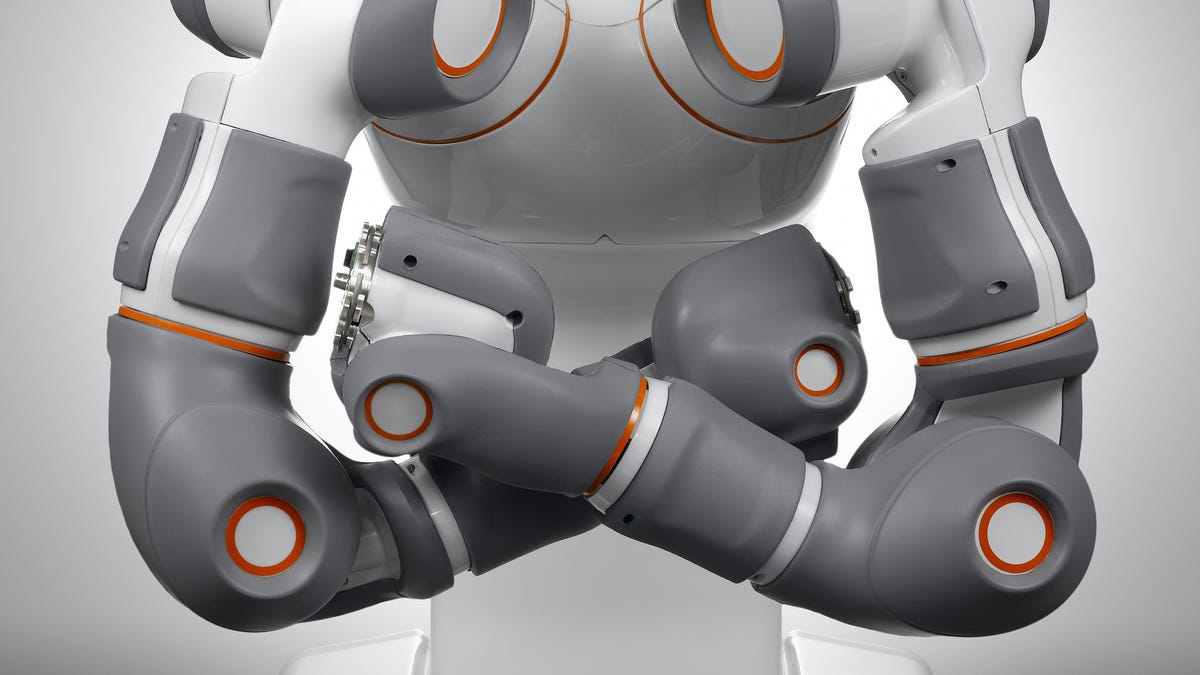Robot companies come to bury C-3PO
Robotics is heating up, but the shape and function of today's robots are the polar opposite of humanoid robots that proliferate in popular culture.

If the word "robot" conjures up for you machines with two eyes and four limbs, it's time to think again.
The robots having a commercial impact today have little to do with C-3PO, Terminator, Rosie the Maid, or other humanoid robots from popular culture. Instead, working robots are surprisingly diverse and, rather than mimic humans' every move, focus on a few very specific tasks.
For a sign of how robotics is shaping up, consider Amazon's $775 million purchase of Kiva Systems last month. Kiva's machines are designed to navigate warehouses to collect products and automate order fulfillment for e-commerce shipments. Hence Amazon's interest.
Kiva's robots, which look like orange-colored bumper cars, are just the tip of the iceberg when it comes to workhorse robots.
The U.S. military has deployed thousands of portable robots, which resemble miniature tanks, to search for explosives and perform other dangerous tasks. iRobot has sold millions of floor-cleaning Roomba robots. Surgeons have been leaning on robotics for minimally invasive operations for years. And the auto industry started using robots for manufacturing as far back as the 1960s.
If you look a little further, though, you see the core ideas of robotics, including machine learning and automation, are seeping into an ever-wider set of uses.
Makani Power is building a wing-shaped wind turbine that relies heavily on autonomous control. Why? The turbine, which flies in circles like a kite to generate power, needs to decide without human intervention when there's sufficient wind speed to go aloft or to come down and set itself on a perch. "It is a robot, 100 percent," said CEO Corwin Hardham.
The U.S. Navy, meanwhile, wants a robotic aircraft that can land on and take off from an aircraft carrier autonomously. It's working with Northrop Grumman on a pair of X-47B prototypes that have made their first few flights on land. The Navy hopes to kick off its first carrier tests in 2013.
Even agriculture is ripe for robotic automation. Stanford University spin-out Blue River Technologies is developing a device that scans a row of vegetables to determine whether a plant is a weed or, say, head of lettuce. Once identified, the machine, pulled by a tractor, will spray the weed, explained CEO Jorge Heraud.
"When you think about robotics, you may think of military applications or other problems, but we think we can have a nice impact in agriculture," he said, adding that organic vegetable farming needs automation to scale and keep prices down.
Human-robot collaboration
Even with more entrepreneurs gravitating toward robotics, it remains a challenging field in which to find business success. A number of technical issues, such as computer vision, remain difficult to solve, and the industry lacks common platforms for developing software for machines, experts say.
And it's always a challenge to divine which products will resonate in niches where they haven't been used before. iRobot, for example, envisioned that its military ground robots could be used for cleaning up nuclear power plants. But it wasn't until the Fukushima disaster last year that iRobot sold four units to measure radioactivity levels. Earlier this week, it sold three robots to utility Progress Energy in the U.S.
Making robots look and act like humans remains an active field of research, and certainly characters such as C-3PO of "Star Wars" fame have inspired countless engineers to work in artificial intelligence. But robotics is creeping into commercial products in more subtle ways, such as cars that use radar to alert a driver to a potential collision, or self-driven hospital carts that can deliver drugs and supplies.
"Users just want to get a task done. They don't care if it's a cool robot. You may, but they may not care if it's a robot at all," Rodney Brooks, robotics pioneer and CTO of manufacturing company Heartland Robotics, said at a recent conference.
While many robots are indeed meant to replace manual labor, there's a movement to have robots work side by side with humans. Heartland Robotics, which remains in stealth mode, is working on robots to work alongside humans in manufacturing. Last fall, the National Institute for Standards and Technology launched a standards and testing effort to ensure safety of people working next to robots.
Robots are gaining better sensing capabilities, which make the prospect of human-robot collaboration realistic for more tasks, said Julie Shah, a professor of robotics at MIT's Computer Science and Artificial Intelligence Lab.
"It's an enormously exciting time to be working in the area of human-robot collaboration," she said. "People are beginning to see if you make robots intelligent enough to work with people, everyone benefits."

